-
by Bold Commerce Collaborator
Did you know that St Johns Coffee Roasters is 11 this year?
That's right!
So today all day long in our store 12oz bags of coffee are only $11.
Co...
-
by Mount Burns
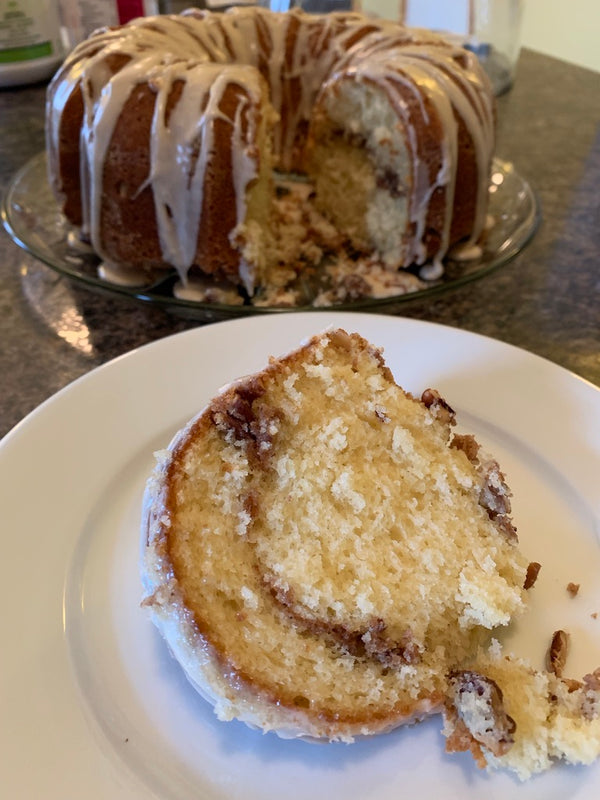
-
by St. Johns Coffee
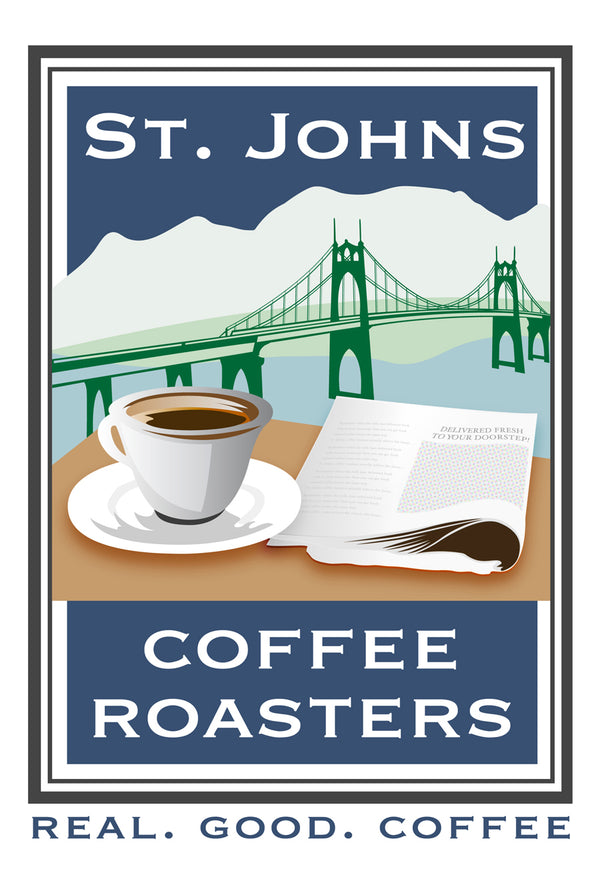
It's hard to believe it has been 10 years but alas, it has.
From what began in the basement of my home ten years ago to what it has beco...
-
by St. Johns Coffee
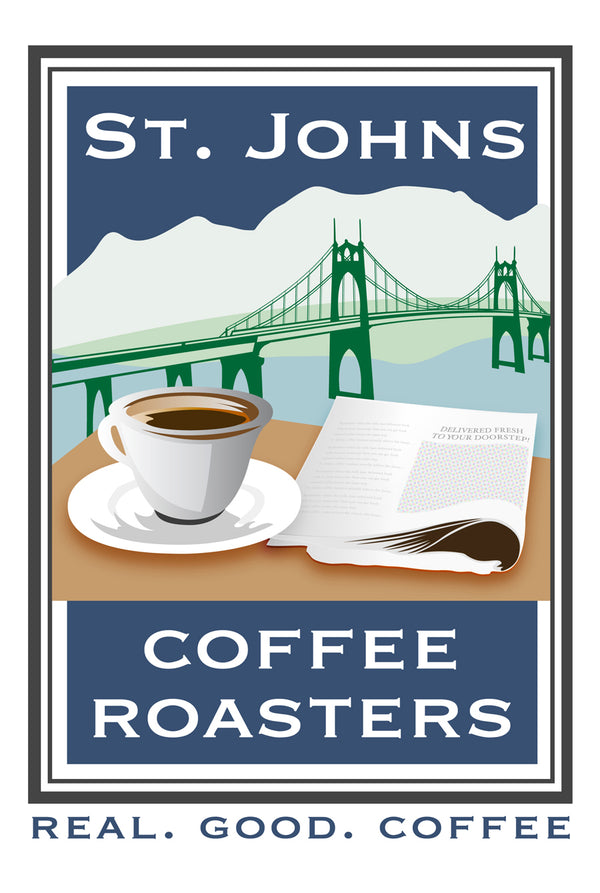
By Chiara Spagnoli Gabardi
As the weather grows warmer, most of us will be eating more salads and fruits, which is a good thing. But did you kno...
-
by St. Johns Coffee

One day only!
Handsome, REAL.GOOD.COFFEE. diner mugs.Usually $12.50 each
Today only - $10 each!
-
by St. Johns Coffee
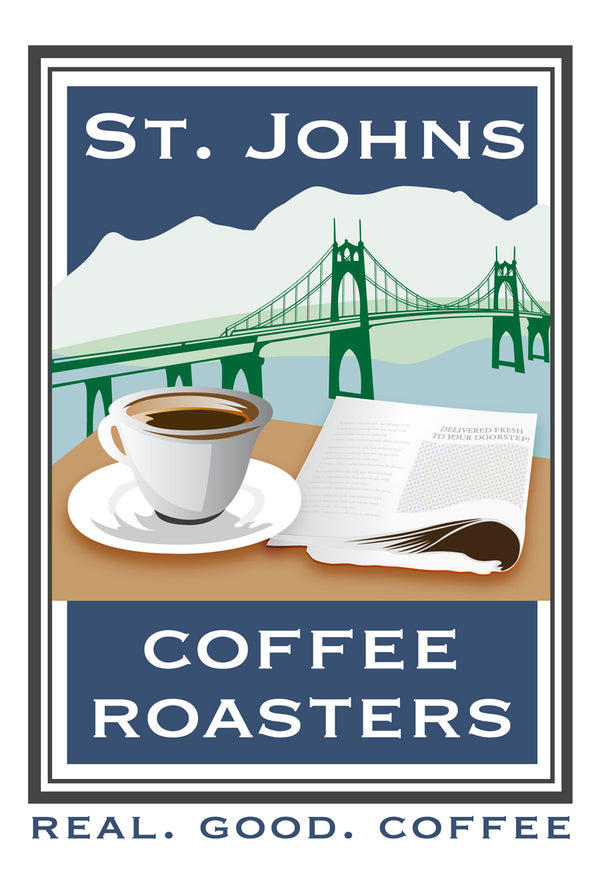
We're getting down to the wire!We can still ship your gift of coffee nationwide but only for a few more days to guarantee it will arrive by Chris...
-
by St. Johns Coffee
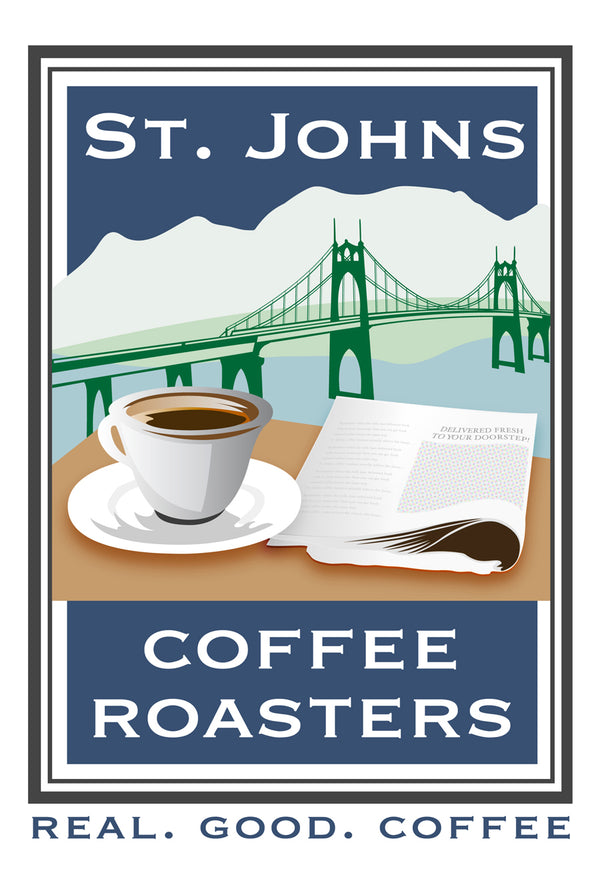
-
by St. Johns Coffee
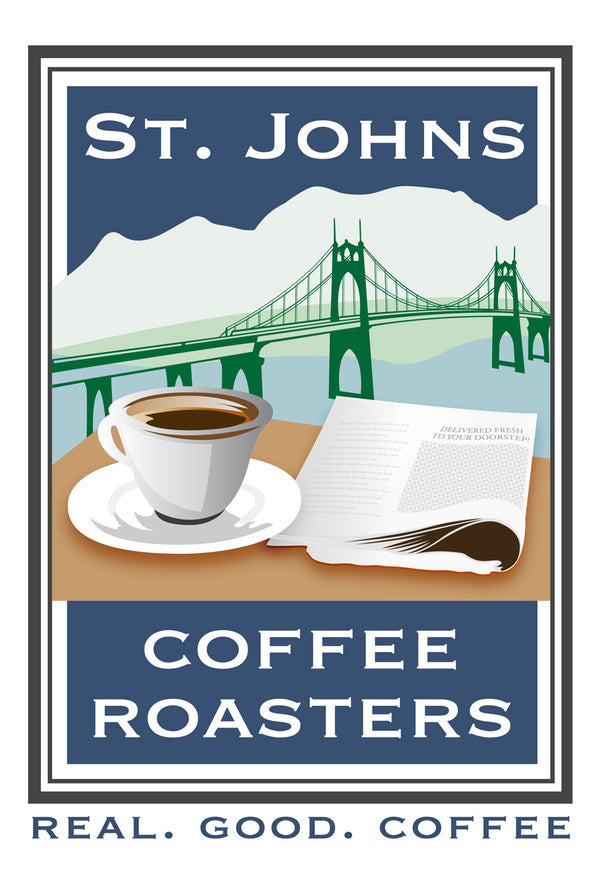
A perfect morning to get cozy with a cup of REAL.GOOD.COFFEE., your favorite book and a St. Johns Coffee Roasters fleece-lined hoodie!
...
-
by St. Johns Coffee

It's that time of year again and there's no better gift than fresh roasted,
organic and fair trade coffees!
-
by St. Johns Coffee
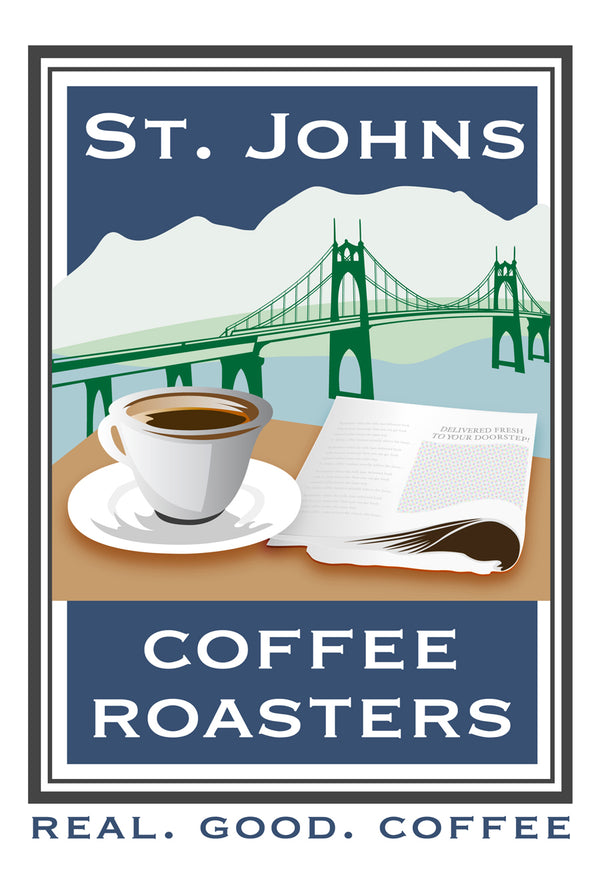
Picture this... it's a dark cool and rainy afternoon and you are vacillating between coffee and/or a cocktail but just can't decide.
We have THE...
-
by St. Johns Coffee
-
by St. Johns Coffee
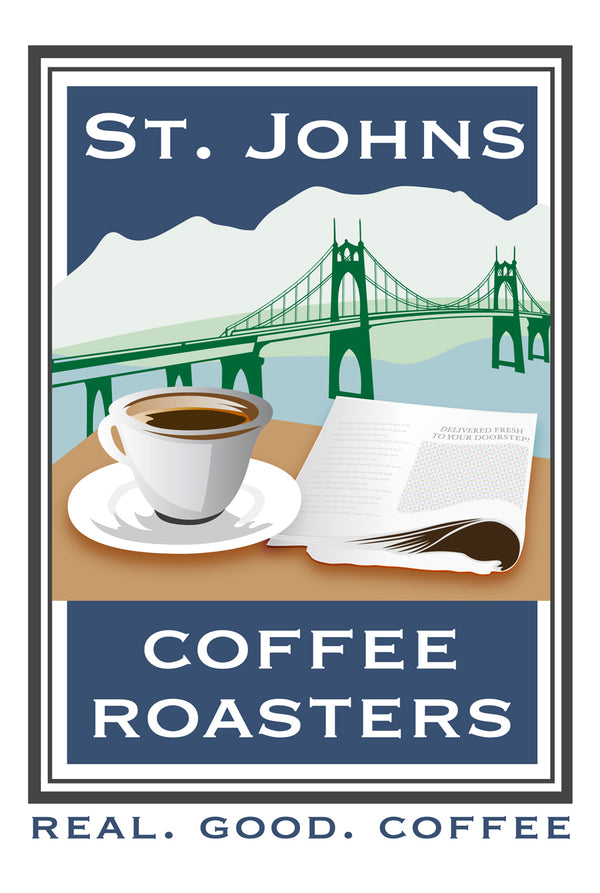
What better way to let someone know how special they are than with the gift of Organic and Fair Trade Coffees. Let us make it even better by person...
Posted in
Anniversaries,
coffee,
custom labels,
Fair trade,
Gifts,
Holidays,
Organic,
organic coffee,
Personalize,
real good coffee,
Weddings
-
by St. Johns Coffee
Celebrate by enjoying 15% off any whole bean coffee purchase. And if you tag us on Twitter, Instagram or Facebook and show us, you'll receive fifty...
-
by St. Johns Coffee
Sometimes, the various flavor descriptions of coffees, wines, or other foods, may seem overwhelming and unapproachable.
However, I believe a big p...
-
by St. Johns Coffee
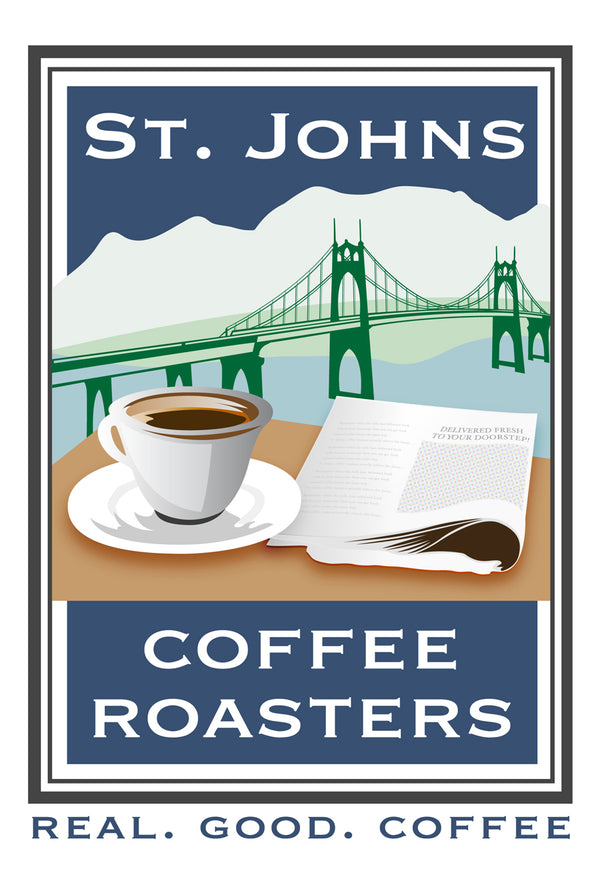
I've long believed the process of brewing coffee each morning had meditative qualities because of the ritual and the sensory experience. However, ...
-
by St. Johns Coffee
Good news (in a venti cup!) for those who love coffee: Two new studies show that drinking more java could help you live a longer life.
The healt...
-
by St. Johns Coffee
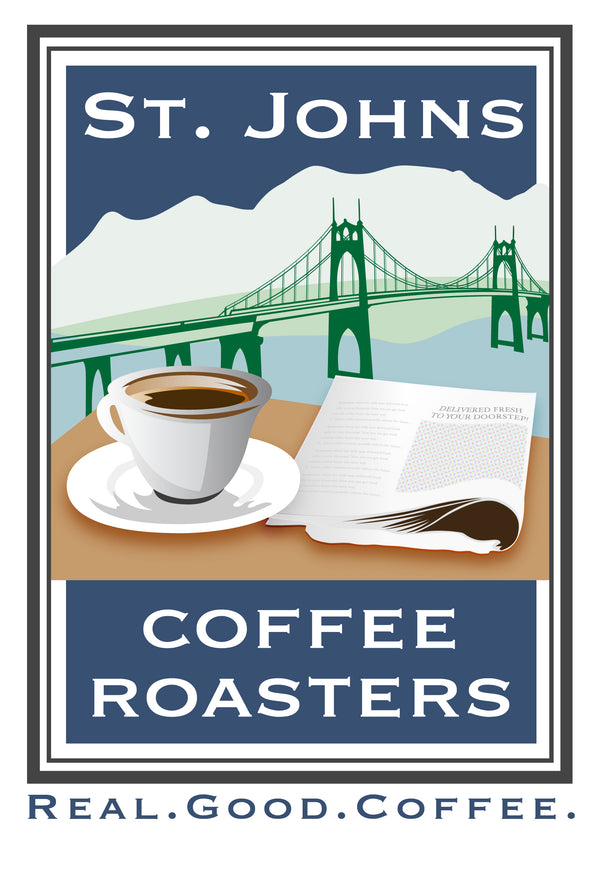
Now available in all locations of New Seasons Markets!
Our award winning Pamplona Blend!
A complex blend of coffees from Africa, Mexico and Sou...
-
by St. Johns Coffee
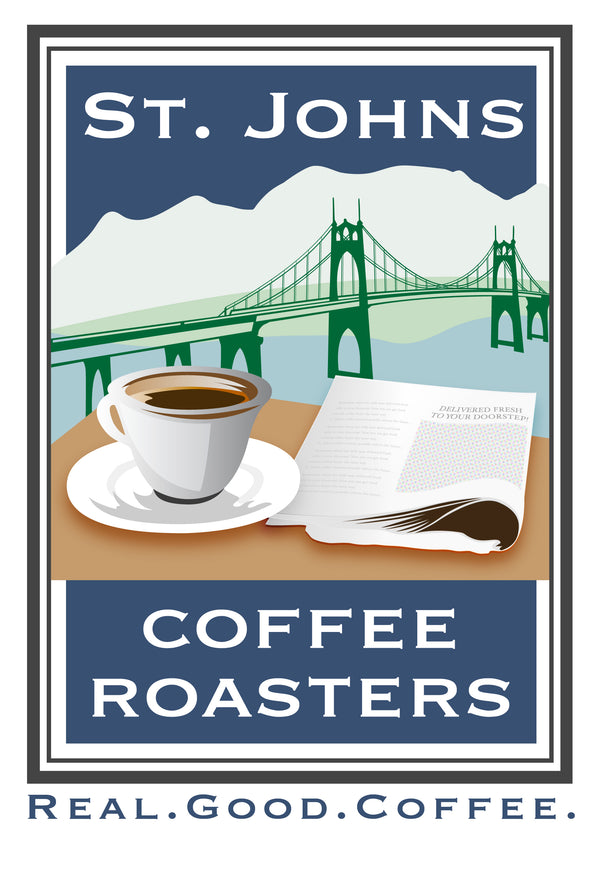
Now available in all locations of New Seasons Markets!
Our award winning Pamplona Blend!
A complex blend of coffees from Africa, Mexico and Sou...
-
by St. Johns Coffee
If you haven't yet seen this -
Willamette Week's "Guide to Portland"!
Check it out!
-
by St. Johns Coffee
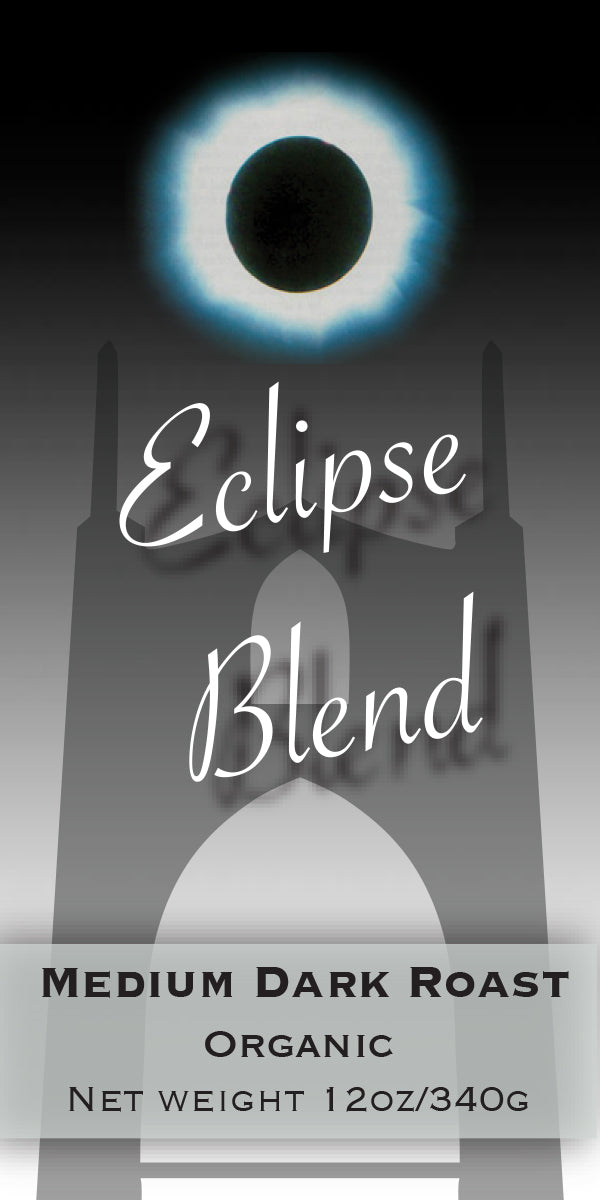
To commemorate the upcoming solar eclipse, we have designed a new blend that will eclipse your senses with dark, complex notes of baker's chocolate...
-
by St. Johns Coffee
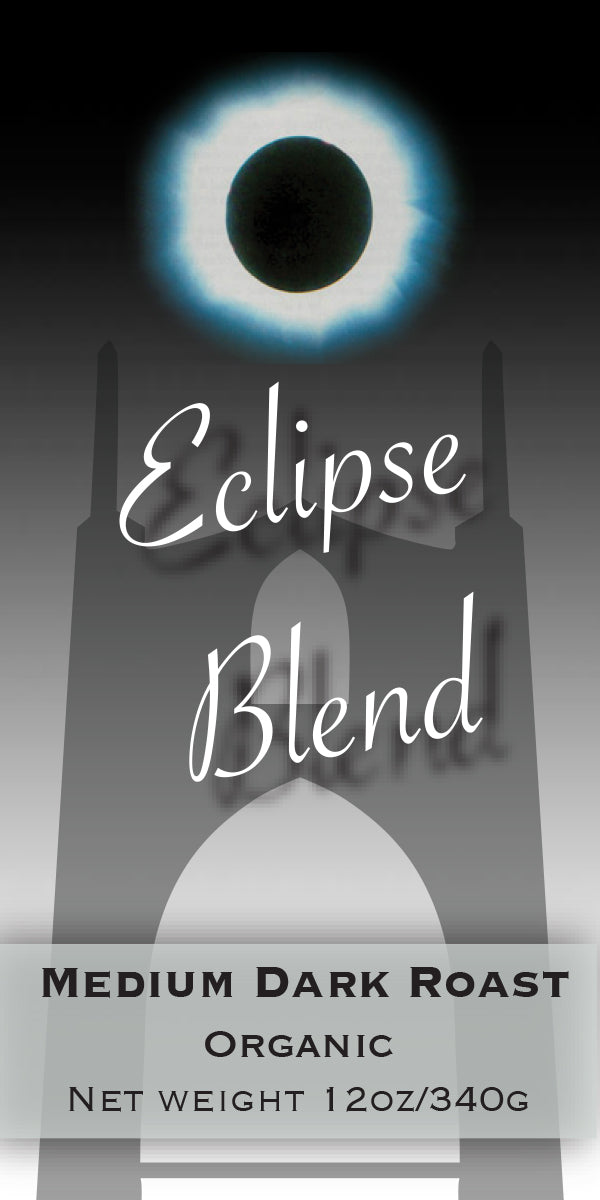
To commemorate the upcoming solar eclipse, we have designed a new blend that will eclipse your senses with dark, complex notes of baker's chocolate...
-
by St. Johns Coffee
To commemorate the upcoming solar eclipse, we have designed a new blend that will eclipse your senses with dark, complex notes of baker's chocolat...
-
by St. Johns Coffee
From the sounds of things, things are set to improve by Saturday, albeit a slight improvement.
We'll be closing the shop at 1 pm again ...
-
by St. Johns Coffee
The Beat (Heat) Goes On!!!
The heat is officially here but we are ready with tons (literally) of fresh-roasted, organic and fair trade coffees a...
-
by St. Johns Coffee
Starting off August with a Bang!
Who knew we would be starting the month with triple-digit temperatures!
But, we still must have our ...
-
by St. Johns Coffee
Check out our new delectable offerings from St. Honorè Boulangerie.
Savory treats to keep you satisfied without the sweetness at an amazing price. ...
-
by St. Johns Coffee
I've always thought drinking coffee was a naturally healthy thing to do. Duh!
Now it's substantiated by people who really know what they're talking...
-
by St. Johns Coffee
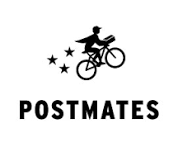
Picture this...
You're sitting in your office, craving a cup of St. Johns Coffee Roasters' coffee but you just don't have time to get to our shop t...
-
by St. Johns Coffee
What better way to show your mother the love than with fresh roasted organic and fair trade coffees.
Gift boxes available, one featuring a SJCR che...
-
by St. Johns Coffee
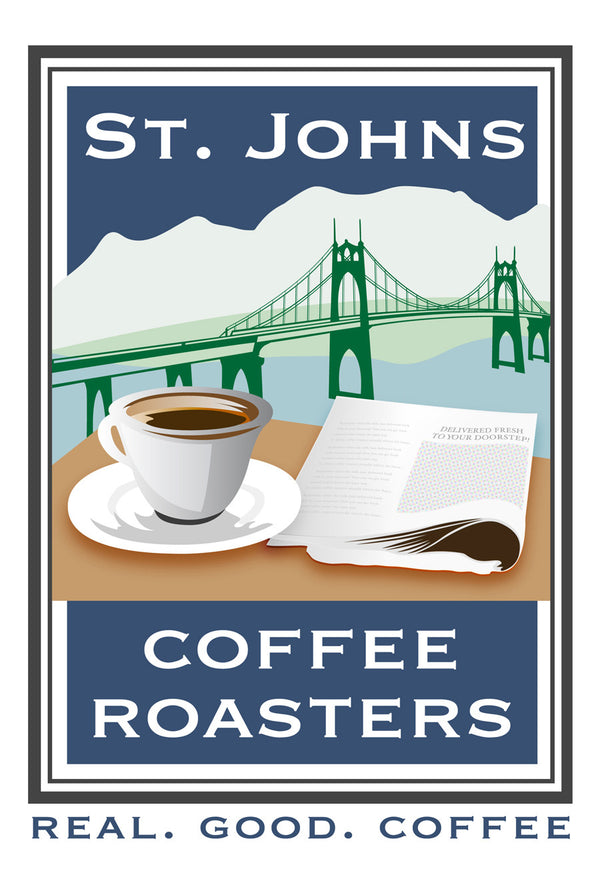
-
by St. Johns Coffee
From the land of Timor....
Just arrived and freshly roasted. We've had this amazing coffee before but as with all other coffees, they are s...
-
by St. Johns Coffee
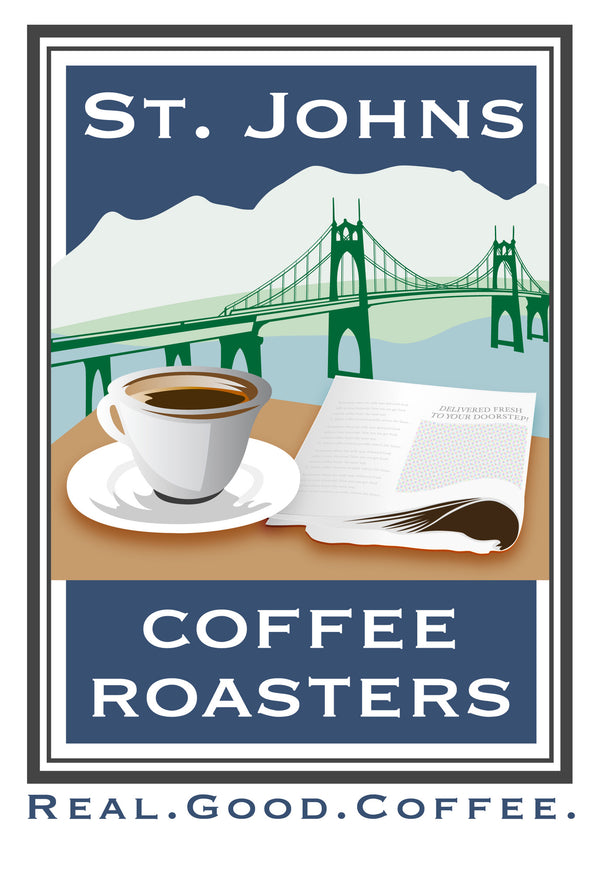
Bounce into Spring with a little caffeine!We've finally begun to see some improvement in the weather although the forecast still shows rain mixed w...
-
by St. Johns Coffee
Please join us tomorrow (Thursday 2.16.17) between 8 am - 10 am for a sampling of the delicious oatmeals from Straw Propeller.
Kari Ogle-Rogerson ...
-
by St. Johns Coffee
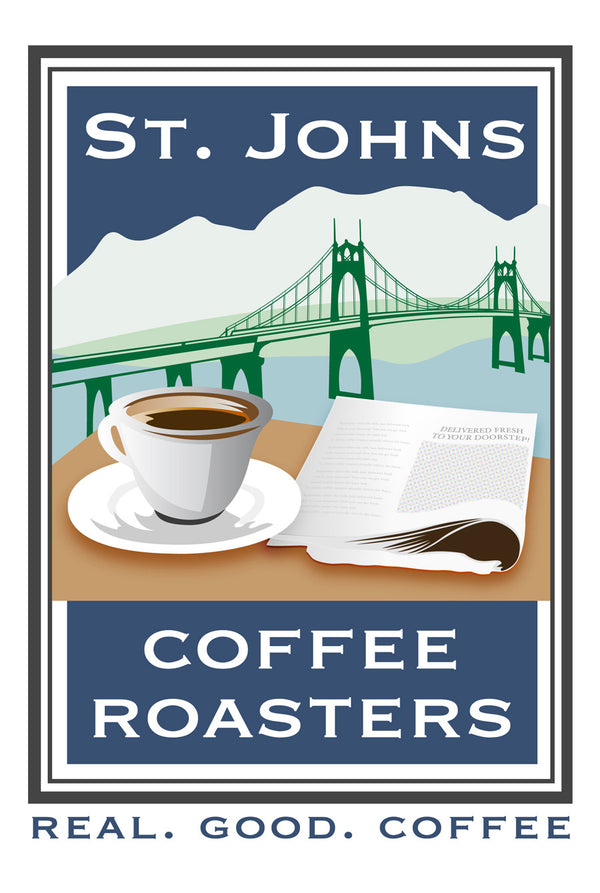
Cupid has arrived early!We're starting off the month with some great specials to celebrate the month of love. (I hope you're living ea...
Posted in
Amistad,
Baguette sandwiches,
cardamom lattes,
Croissants,
El Salvador,
Ethiopian Yirgacheffe,
French pastries,
Honduras Alto De Los Santos,
new food items,
Organic,
Pain au chocolate,
real good coffee,
St. Honorè,
Travel mugs,
Yelp
-
by St. Johns Coffee
Come check out our newest arrival from Colombia.
It's the Colombia FTO Tolima.
Rich in notes of cocoa, caramel and toffee. Well balanced...
-
by St. Johns Coffee
Well, sort of...
Despite the fact there is still oodles and gobs of snow on the ground and it's not going anywhere soon, we are planning on openin...
-
by St. Johns Coffee
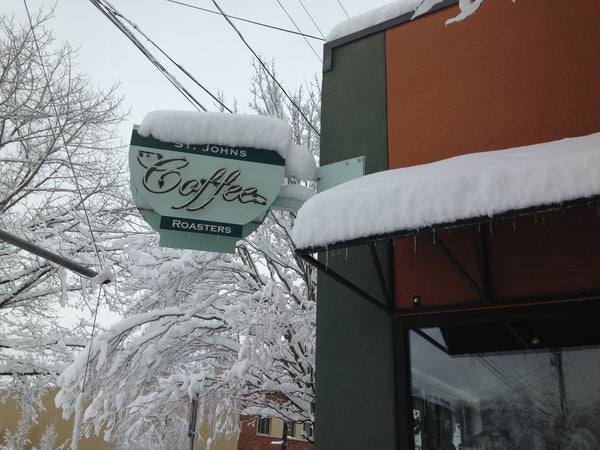
I thought the crazy weather of the past few weeks was exhausted, only to be followed by 12 inches of snow last night.
Here's the view out the ...
-
by St. Johns Coffee
Greetings Everyone,
Just a note to let you know we have made the decision to close the shop tomorrow (Sunday, January 8th), due to the weather.
Tha...
-
by St. Johns Coffee
We’re starting 2017 with style! Beginning today, January 4th, we are proud to announce we will begin carrying French products from St. Honorè Boula...
-
by St. Johns Coffee
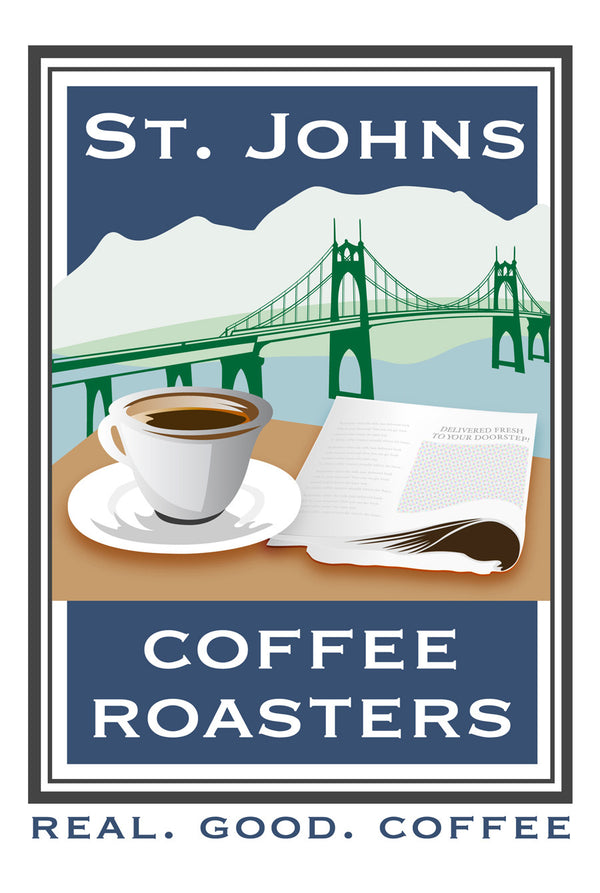
Greetings Everyone!This weekend only! 10% off on all t-shirts & hoodies. New supply of t-shirts just arrived! - Check out our selection of coff...
Posted in
2016,
Aeropress,
Amazon.com,
Amistad,
anti-oxidents,
bagel spreads,
bagels,
Baratza,
brewers,
caramel,
cardamom lattes,
coffee,
coffee tasting,
Colombia Red Ecolsierra,
Costa Rica,
Costa Rica La Amistad,
croissants,
Dry process,
El Pilon,
El Salvador,
espresso,
Ethiopian,
Ethiopian Yirgacheffe,
Fair trade,
Farm direct,
George Fendel,
Honduras Alto De Los Santos,
hoodies,
latte,
logo cups,
Matcha Latte,
organic coffee,
real good coffee,
roast,
Rwanda,
salads,
sale,
sidewalk seating,
St. Johns Farmers Market,
t-shirts,
tea,
Travel mugs,
wrap,
Yelp
-
by St. Johns Coffee
Check out our selection of coffees on Amazon.com. Seven varieties are available through Amazon Prime so enjoy the convenience of Free Shipping!
h...
-
by St. Johns Coffee
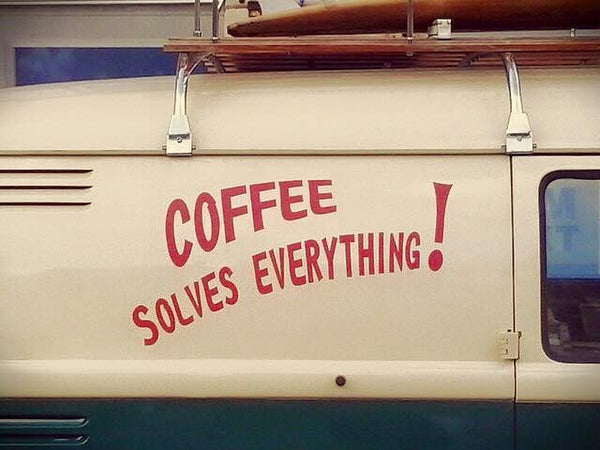
This week's news -
Coffee is not a word, it's a sentence. We just saw this posted in a Mississippi coffee shop yesterday and thought it ap...
Posted in
Amistad,
anti-oxidents,
antioxidents,
bagel spreads,
bagels,
Baratza,
Bialetti,
Brazil,
breakfast,
burlap,
caramel,
cardamom lattes,
coffee,
coffee tasting,
cold brew,
Colombia Red Ecolsierra,
Costa Rica,
Costa Rica La Amistad,
croissants,
Dry process,
El Pilon,
El Salvador,
espresso,
Ethiopian,
Ethiopian Yirgacheffe,
Fair trade,
Farm direct,
food options,
grinders,
Guatemala Finca Bourbon,
Honduras Alto De Los Santos,
hoodies,
hummus,
jams,
latte,
logo cups,
Matcha Latte,
Mexican pottery,
Moka Pot,
Mount Burns,
new food items,
New Seasons,
Organic,
pour over,
real good coffee,
roast,
salads,
sandwiches,
sidewalk seating,
St. Johns Farmers Market,
Stove Top Espresso Maker,
tea,
Travel mugs,
Yelp
-
by St. Johns Coffee
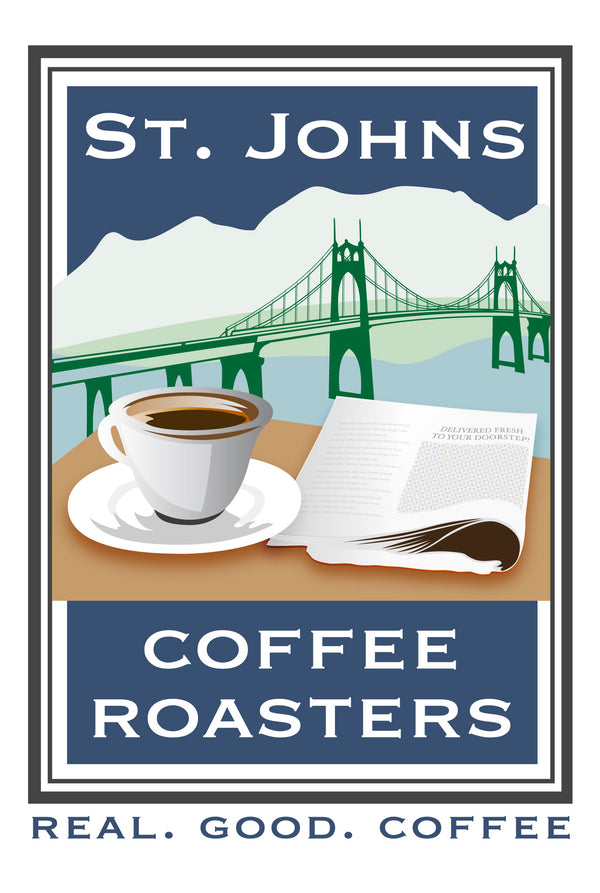
The concept of me telling someone not to drink coffee seems foreign. However, this past week, I received an e-mail from someone asking if our coffe...
Posted in
Aeropress,
Amistad,
anti-oxidents,
antioxidents,
bagel spreads,
bagels,
Bialetti,
Brazil,
caramel,
cardamom lattes,
Chuck's Produce,
coffee,
coffee tasting,
cold brew,
Colombia Red Ecolsierra,
croissants,
Dry process,
El Pilon,
El Salvador,
Ethiopian,
Ethiopian Yirgacheffe,
Fair trade,
Farm direct,
food options,
George Fendel,
grinders,
Guatemala Finca Bourbon,
Honduras Alto De Los Santos,
jams,
latte,
logo cups,
market,
Matcha Latte,
Mount Burns,
new food items,
Organic,
pour over,
real good coffee,
roast,
Rwanda,
salads,
sandwiches,
sidewalk seating,
St. Johns Farmers Market,
Stove Top Espresso Maker,
Travel mugs,
wrap,
Yelp
-
by St. Johns Coffee
This week's big news -
Our coffees are now available through Amazon!!! Just click on the link below. To help get things started, all purchases...
-
by St. Johns Coffee
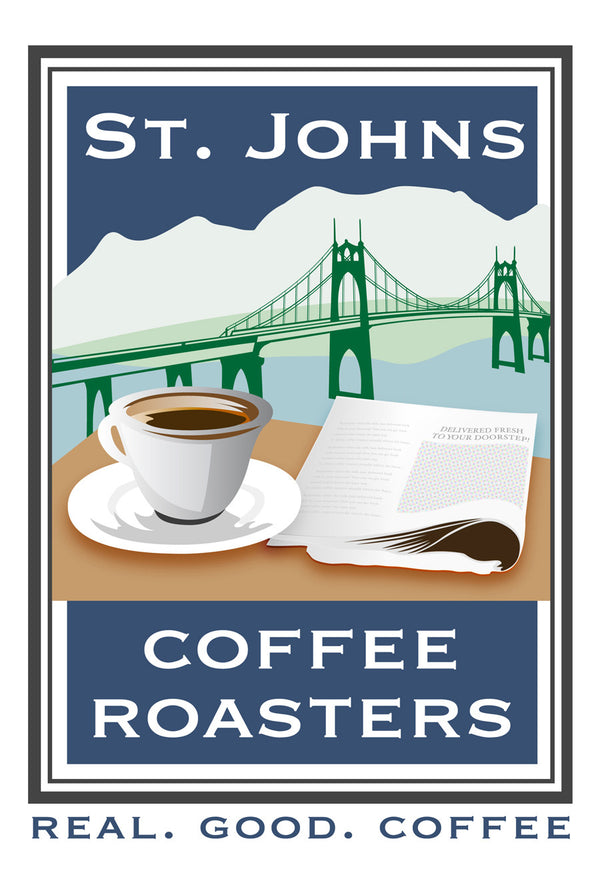
Last week I mentioned we would be receiving a new Ethiopian Sidamo coffee. It arrived late Tuesday and had barely gotten into the shop before ...
Posted in
2016,
Aeropress,
Amistad,
bagel spreads,
bagels,
bags,
Baratza,
Bialetti,
Brazil,
Brazil Grota Sao Pedro,
breakfast,
burlap,
caramel,
cardamom lattes,
Chuck's Produce,
coffee,
coffee tasting,
cold brew,
Colombia Red Ecolsierra,
Costa Rica,
Costa Rica La Amistad,
croissants,
Delores Hidalgo,
Dry process,
El Pilon,
El Salvador,
espresso,
Ethiopian,
Ethiopian Yirgacheffe,
Fair trade,
Farm direct,
food options,
Guatemala Finca Bourbon,
Honduras Alto De Los Santos,
hoodies,
hummus,
latte,
logo cups,
market,
Matcha Latte,
Mexican pottery,
Mount Burns,
New Seasons,
Organic,
pour over,
real good coffee,
roast,
Rwanda,
St. Johns Farmers Market,
Stove Top Espresso Maker,
Travel mugs
-
by St. Johns Coffee
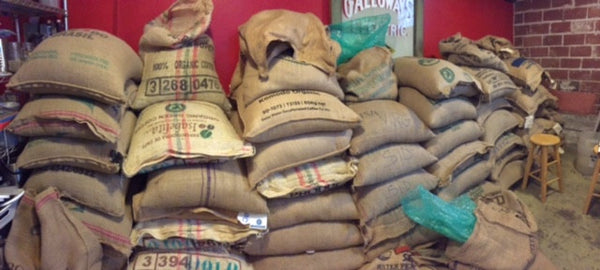
It's time again for the St. Johns Farmers Market to open. The season begins this Saturday, June 4th and continues through November 19th.
It sound...
Posted in
2016,
Aeropress,
anti-oxidents,
bagel spreads,
bagels,
Baratza,
Bialetti,
Brazil,
Brazil Grota Sao Pedro,
caramel,
cardamom lattes,
coffee tasting,
Colombia Red Ecolsierra,
Costa Rica,
Costa Rica La Amistad,
croissants,
Dry process,
El Pilon,
El Salvador,
espresso,
Ethiopian,
Ethiopian Yirgacheffe,
Fair trade,
Farm direct,
food options,
Guatemala Finca Bourbon,
Honduras Alto De Los Santos,
hummus,
latte,
logo cups,
market,
Matcha Latte,
Moka Pot,
Mount Burns,
new food items,
Organic,
pour over,
real good coffee,
roast,
Rwanda,
St. Johns Farmers Market,
Stove Top Espresso Maker,
Travel mugs
-
by St. Johns Coffee
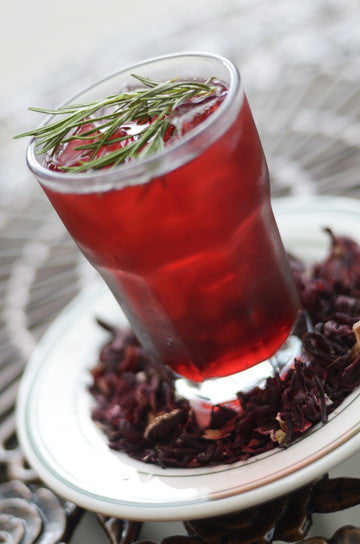
Greetings Everyone,
This weekend marks the beginning of The Portland Rose Festival. And unlike many years, it looks as though the weather will be ...
Posted in
Aeropress,
bagels,
Baratza,
Bialetti,
caramel,
coffee,
Colombia Red Ecolsierra,
Costa Rica,
Costa Rica La Amistad,
Ethiopian,
Ethiopian Yirgacheffe,
Fair trade,
Farm direct,
food options,
grinders,
Guatemala Finca Bourbon,
Honduras Alto De Los Santos,
jams,
latte,
Moka Pot,
Mount Burns,
new food items,
real good coffee,
roast,
Rwanda,
St. Johns Farmers Market,
Stove Top Espresso Maker,
Travel mugs
-
by St. Johns Coffee
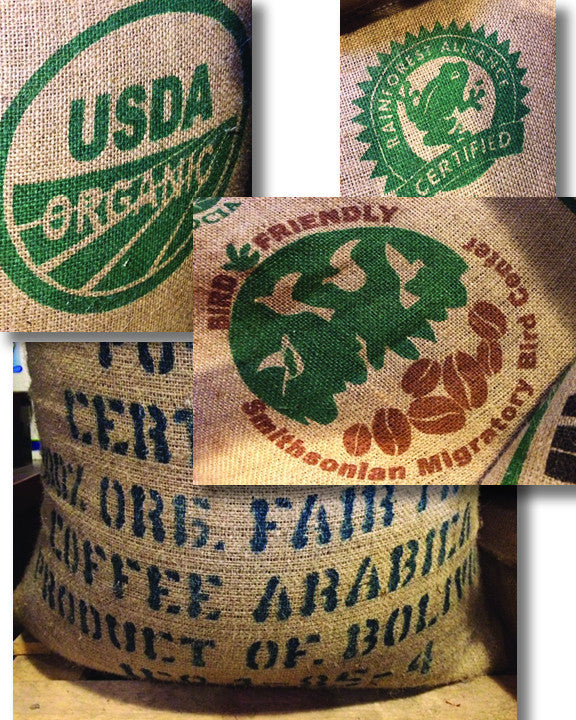
Memorial Day is generally the kick-off to a season of bbq'ing so I thought I'd share a recipe for dry rub for any type of meat you choose. Oh and o...
Posted in
Aeropress,
Amistad,
bagels,
Baratza,
Bialetti,
Brazil,
Brazil Grota Sao Pedro,
breakfast,
brewers,
caramel,
cardamom lattes,
coffee,
coffee tasting,
cold brew,
Colombia Red Ecolsierra,
Costa Rica,
Costa Rica La Amistad,
croissants,
El Pilon,
El Salvador,
espresso,
Ethiopian,
Ethiopian Yirgacheffe,
Fair trade,
Farm direct,
food options,
grinders,
Guatemala Finca Bourbon,
Honduras Alto De Los Santos,
hoodies,
latte,
logo cups,
Moka Pot,
new food items,
New Seasons,
Organic,
pour over,
real good coffee,
roast,
Rwanda,
salads,
sandwiches,
sidewalk seating,
Stove Top Espresso Maker,
Travel mugs,
wrap
-
by St. Johns Coffee
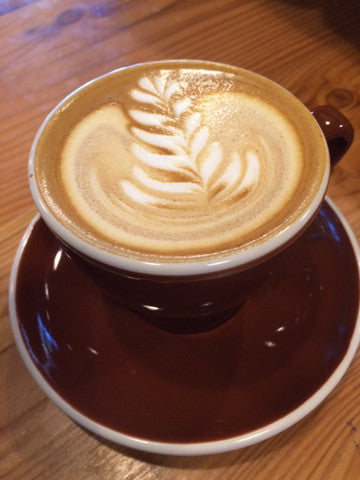
This week we'd like to welcome another new member to our staff. In addition to a passion for excellent coffee, Kirk Sanchez brings a nice quiet ene...
Posted in
Aeropress,
bagel spreads,
bagels,
Baratza,
breakfast,
brewers,
caramel,
cardamom lattes,
Chuck's Produce,
coffee,
coffee tasting,
cold brew,
Colombia Red Ecolsierra,
Costa Rica,
Costa Rica La Amistad,
El Pilon,
El Salvador,
espresso,
Fair trade,
Farm direct,
food options,
grinders,
Guatemala Finca Bourbon,
Honduras Alto De Los Santos,
hummus,
jams,
latte,
logo cups,
Matcha Latte,
Moka Pot,
new food items,
New Seasons,
Organic,
real good coffee,
Rwanda,
salads,
sandwiches,
Sheridan Fruit Company,
sidewalk seating,
Stove Top Espresso Maker,
Travel mugs
-
by St. Johns Coffee
Some of you may have noticed some changes here at the shop (as eluded to in last week's newsletter). Some of those changes include some new personn...

 It's hard to believe it has been 10 years but alas, it has. From what began in the basement of my home ten years ago to what it has beco...
It's hard to believe it has been 10 years but alas, it has. From what began in the basement of my home ten years ago to what it has beco... By Chiara Spagnoli Gabardi As the weather grows warmer, most of us will be eating more salads and fruits, which is a good thing. But did you kno...
By Chiara Spagnoli Gabardi As the weather grows warmer, most of us will be eating more salads and fruits, which is a good thing. But did you kno... One day only! Handsome, REAL.GOOD.COFFEE. diner mugs.Usually $12.50 each Today only - $10 each!
One day only! Handsome, REAL.GOOD.COFFEE. diner mugs.Usually $12.50 each Today only - $10 each! We're getting down to the wire!We can still ship your gift of coffee nationwide but only for a few more days to guarantee it will arrive by Chris...
We're getting down to the wire!We can still ship your gift of coffee nationwide but only for a few more days to guarantee it will arrive by Chris...
 A perfect morning to get cozy with a cup of REAL.GOOD.COFFEE., your favorite book and a St. Johns Coffee Roasters fleece-lined hoodie! ...
A perfect morning to get cozy with a cup of REAL.GOOD.COFFEE., your favorite book and a St. Johns Coffee Roasters fleece-lined hoodie! ... It's that time of year again and there's no better gift than fresh roasted, organic and fair trade coffees!
It's that time of year again and there's no better gift than fresh roasted, organic and fair trade coffees! Picture this... it's a dark cool and rainy afternoon and you are vacillating between coffee and/or a cocktail but just can't decide. We have THE...
Picture this... it's a dark cool and rainy afternoon and you are vacillating between coffee and/or a cocktail but just can't decide. We have THE... What better way to let someone know how special they are than with the gift of Organic and Fair Trade Coffees. Let us make it even better by person...
What better way to let someone know how special they are than with the gift of Organic and Fair Trade Coffees. Let us make it even better by person... I've long believed the process of brewing coffee each morning had meditative qualities because of the ritual and the sensory experience. However, ...
I've long believed the process of brewing coffee each morning had meditative qualities because of the ritual and the sensory experience. However, ... Now available in all locations of New Seasons Markets! Our award winning Pamplona Blend! A complex blend of coffees from Africa, Mexico and Sou...
Now available in all locations of New Seasons Markets! Our award winning Pamplona Blend! A complex blend of coffees from Africa, Mexico and Sou... Now available in all locations of New Seasons Markets! Our award winning Pamplona Blend! A complex blend of coffees from Africa, Mexico and Sou...
Now available in all locations of New Seasons Markets! Our award winning Pamplona Blend! A complex blend of coffees from Africa, Mexico and Sou... To commemorate the upcoming solar eclipse, we have designed a new blend that will eclipse your senses with dark, complex notes of baker's chocolate...
To commemorate the upcoming solar eclipse, we have designed a new blend that will eclipse your senses with dark, complex notes of baker's chocolate... To commemorate the upcoming solar eclipse, we have designed a new blend that will eclipse your senses with dark, complex notes of baker's chocolate...
To commemorate the upcoming solar eclipse, we have designed a new blend that will eclipse your senses with dark, complex notes of baker's chocolate... Picture this... You're sitting in your office, craving a cup of St. Johns Coffee Roasters' coffee but you just don't have time to get to our shop t...
Picture this... You're sitting in your office, craving a cup of St. Johns Coffee Roasters' coffee but you just don't have time to get to our shop t...
 Bounce into Spring with a little caffeine!We've finally begun to see some improvement in the weather although the forecast still shows rain mixed w...
Bounce into Spring with a little caffeine!We've finally begun to see some improvement in the weather although the forecast still shows rain mixed w... Cupid has arrived early!We're starting off the month with some great specials to celebrate the month of love. (I hope you're living ea...
Cupid has arrived early!We're starting off the month with some great specials to celebrate the month of love. (I hope you're living ea... Greetings Everyone!This weekend only! 10% off on all t-shirts & hoodies. New supply of t-shirts just arrived! - Check out our selection of coff...
Greetings Everyone!This weekend only! 10% off on all t-shirts & hoodies. New supply of t-shirts just arrived! - Check out our selection of coff... This week's news - Coffee is not a word, it's a sentence. We just saw this posted in a Mississippi coffee shop yesterday and thought it ap...
This week's news - Coffee is not a word, it's a sentence. We just saw this posted in a Mississippi coffee shop yesterday and thought it ap... The concept of me telling someone not to drink coffee seems foreign. However, this past week, I received an e-mail from someone asking if our coffe...
The concept of me telling someone not to drink coffee seems foreign. However, this past week, I received an e-mail from someone asking if our coffe... Last week I mentioned we would be receiving a new Ethiopian Sidamo coffee. It arrived late Tuesday and had barely gotten into the shop before ...
Last week I mentioned we would be receiving a new Ethiopian Sidamo coffee. It arrived late Tuesday and had barely gotten into the shop before ... Greetings Everyone, This weekend marks the beginning of The Portland Rose Festival. And unlike many years, it looks as though the weather will be ...
Greetings Everyone, This weekend marks the beginning of The Portland Rose Festival. And unlike many years, it looks as though the weather will be ... Memorial Day is generally the kick-off to a season of bbq'ing so I thought I'd share a recipe for dry rub for any type of meat you choose. Oh and o...
Memorial Day is generally the kick-off to a season of bbq'ing so I thought I'd share a recipe for dry rub for any type of meat you choose. Oh and o... This week we'd like to welcome another new member to our staff. In addition to a passion for excellent coffee, Kirk Sanchez brings a nice quiet ene...
This week we'd like to welcome another new member to our staff. In addition to a passion for excellent coffee, Kirk Sanchez brings a nice quiet ene...

























